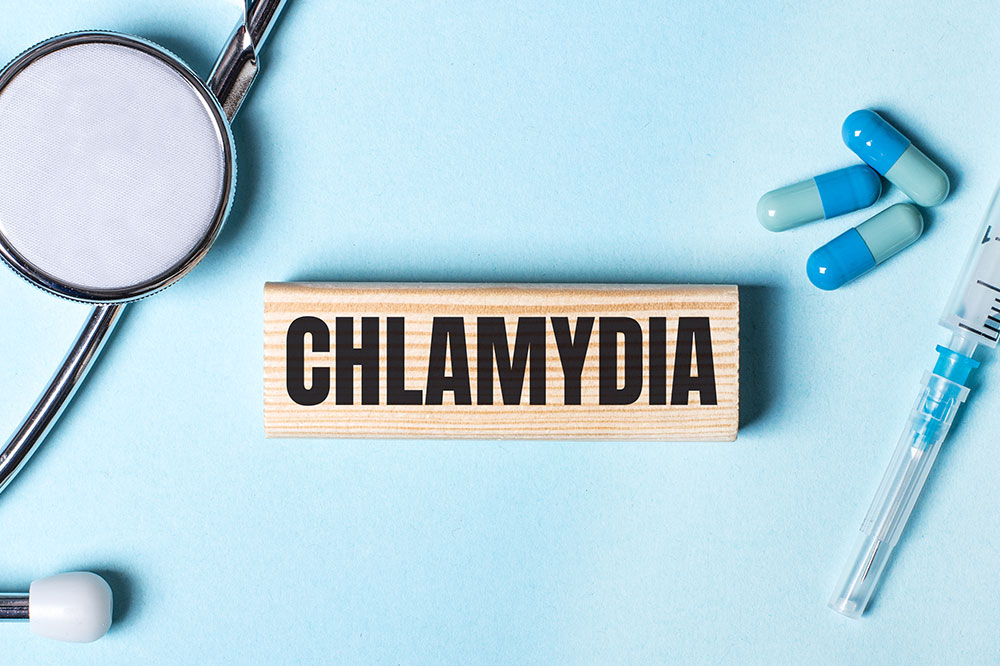
Chlamydia – Causes, symptoms, and management options
The bacterium Chlamydia trachomatis is the source of the prevalent STI known as chlamydia. It can affect both men and women; sometimes, it may not produce any symptoms. Chlamydia can lead to serious health complications such as infertility, pelvic inflammatory disease, and even ectopic pregnancy if left untreated. The good news is that chlamydia is easily treatable with antibiotics, and regular STI screenings can help prevent the spread of the infection.
Causes of chlamydia
The bacterium which causes chlamydia can be spread through sexual intercourse with an infected individual having the disease. This might happen during oral, anal, or vaginal intercourse. Here is a list of all the reasons that can cause chlamydia:
- Unprotected sex
Having sex without a condom or other barrier techniques raises the possibility of chlamydia transmission. - Multiple sexual partners
The chance of contracting the chlamydia bacteria can rise if a person has multiple sexual partners or engages in high-risk sexual behavior. - Vertical transmission
Neonatal chlamydia infections can result from the vertical transmission of chlamydia from an infected woman to her baby during childbirth. - Age and gender
As the cervix is more vulnerable to infection, chlamydia is more frequently reported in young, sexually active people, particularly women.
Symptoms of chlamydia
Chlamydia can be described as a “silent” infection since it can often go unnoticed by those with it. When symptoms of chlamydia materialize, they could include painful urination, genital discharge, and discomfort during sexual activity. Chlamydia can cause major health issues, including infertility, pelvic inflammatory disease, and persistent pelvic pain if it is not treated.
Due to the advent of healthcare technology, chlamydia is easily cured with prescriptions. However, routine STI screenings are crucial to stop the spread of the infection. It can be challenging to diagnose chlamydia because many infected individuals may not show any signs of the illness in the initial stage of the condition. When symptoms do materialize, they can differ based on the affected location.
Chlamydia symptoms are frequently seen:
For females
- Unexpected vaginal fluid
- Soreness or pain while urinating
- Pain experienced during sexual activity
- Lower-back discomfort
- Bleeding after or between cycles
- Cervicitis (inflammation of the cervix)
For males:
- Voiding of the urethra
- Soreness or pain while urinating
- Testicular soreness or pain
- Urethritis (inflammation of the urethra)
Remember that chlamydia can infect additional body sections, such as the rectum or throat, and may result in symptoms specific to those regions.
Treatments for chlamydia
Antibiotics can treat chlamydia, typically in a single dose or a brief course. Even if symptoms subside before the recommended course of antibiotics is completed, taking the prescription treatment for chlamydia as directed is crucial. Additionally, it’s critical to refrain from sexual activity or constantly use condoms while receiving treatment to prevent infection spread or reinfection.
Sexual partners of an infected individual should also be informed and tested for chlamydia in addition to antibiotics to stop reinfection and further infection spread. Retesting is advised to confirm that the infection has been successfully treated after finishing therapy.
Tips to prevent chlamydia
It’s vital to engage in safe intercourse to lower your risk of contracting chlamydia or transmitting it to others. Here are some measures you can take to prevent contracting chlamydia:
- During every sexual encounter, including vaginal, anal, and oral sex, use condoms consistently and properly.
- Reduce the number of sexual partners you have, and stay away from partners exhibiting STI symptoms.
- Get routine exams and screenings for sexual health, particularly if you engage in high-risk sexual behavior.
- Ask your sexual partners about their past and current state of sexual health.
- Douching should be avoided as it can alter the normal bacterial balance in the genital region and raise the risk of infection.
Regular STI screenings must be prioritized, especially for people with several partners or who have unprotected intercourse. Early chlamydia diagnosis and treatment can stop the infection from spreading to others and causing long-term health issues.
Both men and women can contract the sexually spread infection of chlamydia. The symptoms can include abnormal discharge, pain or discomfort during urination or sexual activity, and lower abdominal pain, even though it can occasionally go unnoticed. Prompt diagnosis and prescription treatment are critical to successfully treating the infection and avoiding complications.
Some of the treatments for chlamydia from occurring or spreading by taking preventive measures like using condoms consistently, limiting the number of sexual partners, and having regular sexual health exams. To maintain sexual health and stop the transmission of STIs like chlamydia, remember that safe sexual practices and routine testing are essential.




